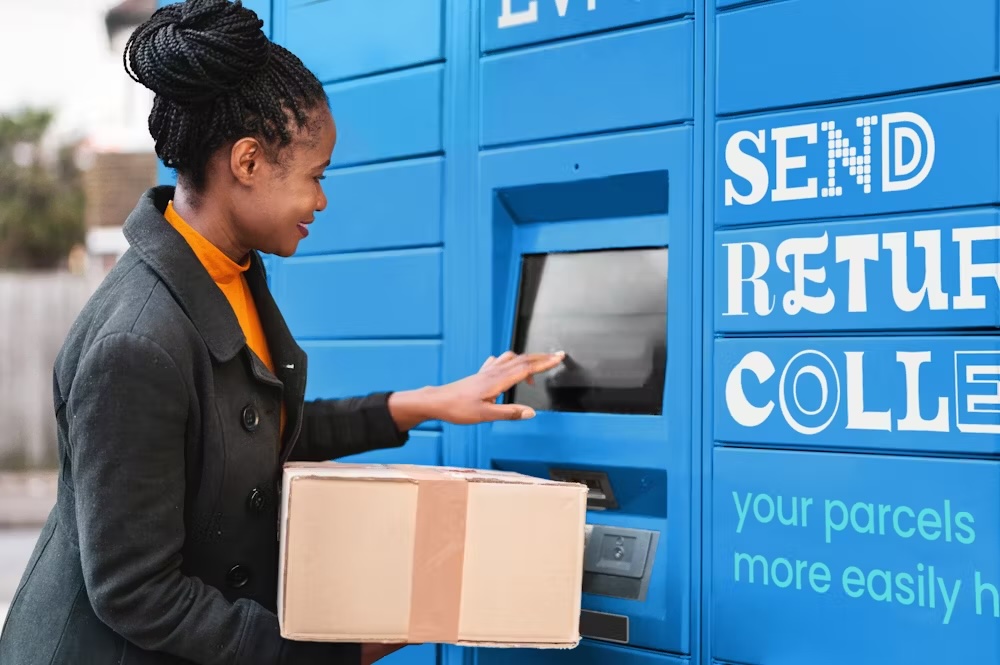Encouraging your customers to become brand advocates and and engage fully with your offer takes more than just the right merchandise at the right price: it can involve language, ethics and social activities as well, writes Penelope Ody
1. Make regions and multilingual choices obvious
Make it easy and obvious that you have numerous national sites and that it is simple to change language. Land on www.ikea.com from a British-based computer, for example, and you are greeted with buttons giving the option of “Take me to IKEA United Kingdom”, or “I want to choose another country”. Choose the alternative and up comes a screen listing the 50-plus countries where Ikea trades, with a comprehensive pull down menu of languages for each – Catalan, Basque or Castilian for Spain, for example.
Like many, Nike puts the national flag of the site you have landed on in the top right hand corner, but click on it and you are presented with a choice of continents, followed by a pull-down menu of countries and subsequent pull-downs for language – such as, in this case, French, Dutch, English or German for Belgium.
Others – including Zalando and Toys R Us – seem to believe that putting national flags or country options way down at the foot of the landing page is better, although that doesn’t seem to be the most obvious place to look.
2. Encourage input
When shoppers engage with a brand they do more than just buy it: they talk about it, feel supportive of it and – sometimes – want to improve it. Encouraging feedback through product ratings and reviews is an obvious tactic for increasing engagement and the majority of the Top 50 sites in this dimension score highly for their ability to encourage shopper input. L’Occitane’s customer reviews eulogise about its products’ ability to smooth skin and clear wrinkles, or example, while Lidl’s praise quality and price: especially impressive since the site is not transactional so customers are visiting it to make comments or look for information rather than buy.
Rather than give star ratings Euronics’ UK site uses Revoo to verify reviews and asks for direct feedback on specific parameters for each piece of equipment so that, for example, washing machines can be rated for ease of use and cycle times, while fridge-freezers can be awarded marks for capacity or energy consumption among other things.
3. Persuade them to like you
Many sites allow shoppers to “like” individual products as well as “like” the retailer itself via Facebook. With many of the top sites boasting upwards of 2million “likes” on Facebook, only being able to claim a few hundred thousand can look rather sad.
It’s the same when it comes to products where the number of “likes” displayed next to that ubiquitous uplifted thumb is zero. Does the fact that nobody actually “likes” the product act as a deterrent? Ikea displays its product likes on a discrete footer to the product page along with other social media symbol links. It’s not quite so obvious as at Yves Rocher where the “like” symbol appears next to the product picture, but it does at least make any zeros not quite so obvious. Putting a little more effort in persuading shoppers to “like” your products may be worth trying.
4. Allow social sharing
Encouraging your customers to post images of themselves wearing their latest purchases is an established tactic for fashion sites to enhance brand engagement. Boden makes it easy with a “Upload a photo” click through next to the #bodenbyme images on its landing page. Topshop similarly has a “Click here to upload your photographs” instruction on its #topshopstyle screen. Click on an image up pops additional options of tweeting or sharing that image on Facebook or Pinterestas well as the option to click through to the relevant product pages and “shop this look”.
Simply Be doesn’t provide an easy click through for its #wearecurves images but does at least tell customers how to post an image by using the tag on Instagram or twitter, while Office actively encourages shoppers to “share their style snaps” at #officeloves with the carrot of a potential prize of “£100 to spend with us”.
According to InternetRetailing researchers, this sort of social sharing is most popular in Finland, Portugal, Italy and UK but less common on sites in Belgium, Sweden, and Hungary.
5. Flaunt your green credentials
For retailers targeting millennials and younger age groups, being seen to care about the environment can be key. Various studies in recent years have confirmed than in general, millennials care deeply about the planet, green issues, climate change and sustainability. One global survey by Nielsen found that three out of four millennials are willing to pay more for sustainable offerings, while some analysts suggest that “marketing your corporate social responsibility issues to millennials” can enhance their engagement and support.
The Body Shop has well-established green credentials and makes them very clear on its website with a petition for shoppers to sign against animal testing of products, as well as its “Enrich not Exploit” commitment and #inourhands campaign “to make the world a better place”. Yves Rocher has a “foundation”: “a pioneer in global eco-citizenship … committed to preserving biodiversity”. The foundation aims to plant 100million trees with a counter on the site constantly adding them up and also gives a “Terre de Femme” prize for women who help to protect the environment.
Puma and Nike also deliver strong sustainability messages. Click on “sustainability” on the Puma site and you have a choice of detailed downloads giving chapter and verse on the sustainability of its supply chain. Nike does it rather more pictorially detailing the environment-saving aspects of its Flyknit products.
Boden delivers a 1,000-word explanation detailing its “commitment to ethical trade” and its support for charities helping to improve the lives of the women who work in the Far East’s clothing factories while Boots provides a CSR link detailing its initiatives including membership of The Prince’s May Day Network, for businesses “committed to working collaboratively to tackle climate change, helping to build a sustainable future for our planet”.
It may all seem slightly esoteric, but for the generation vociferously committed to caring for the environment, reassurance that the items they buy come from sustainable sources and are produced ethically can be a key influence in buying decisions.
6. Keep them coming back
True brand enthusiasts visit their favourite sites not just to buy, but to see what is new or look for information. Many of the Top 50 provide newsletters, blogs or online magazines for their customers, while others also offer helpful or seasonal tips.
Bon Prix provides a “holiday packing made easy” checklist of things to take with tips for avoiding too many creases. Homebase offers a raft of “How to…” guides, many with supporting videos and Boots has plenty of “inspiration and advice” putting seasonal topics top of the menu list: “summer” includes lists of first aid remedies and toiletries to include in the suitcase.
Currys provides “techtalk” which discusses and explains the latest techie gadgets in sufficient details to satisfy even the more geeky of its customers, while Clas Ohlsen has “solutions” which includes buying guides for newer products, such as LED lights.
Information isn’t the only reason to keep returning: T K Maxx has weekly special offers and “flash events” for account holders, which no doubt helps encourage its most regular bargain hunters to keep checking the site. MandM Direct takes a similar approach reminding shoppers that “Once it’s gone it’s gone. Our styles can sell out quickly and we can’t promise to have them back in stock – be the first to see what new deals are coming in by signing up to our emails …”
7. Promote your channels
A shopper may land on your desktop site, mobile site, enter a store or find you on Facebook or via Pinterest link. In general it is the multichannel customer who spends more and is the most loyal, so make it easy for them to engage with your various channels.
Debenhams puts “store finder” top right of its pages, accessible from anywhere on its site. Ikea does the same with “store locator” although confusingly click through and the first thing on the “store” page is a current special offer and much scrolling down is required to reach the map, list of branches and – helpfully – order and collection points.
Smyths Toys make the store option very obvious with a headline link to “Store events” which details of all the toy demos, face painting days, or competitions happening in each of its stores and at which times.
Several etailers also make their mobile sites and apps just as accessible. Marks & Spencer has a link to “download our apps” with click throughs from this page to both Apple Appstore and Googleplay. Asos also puts “mobile site and apps” in its foot of page information with direct click through to Appstore for iPhone or iPad versions and to Googleplay for the Android making it very easy and obvious for the least technically-minded to download the correct version. Around 58% of Asos orders now come via mobiles.
Perhaps surprisingly, information about apps on many other sites requires several click throughs to customer services, loyalty card links or FAQs to find the relevant information.
8. Encourage affiliates
Whether they’re enthusiastic customers willing to host a “party” to promote your products or an independent retailer eager to link to your website, affiliation programmes can help build both brand engagement and visibility. The Body Shop has been running its “At Home” programme for 23 years. Individuals can sign up to become “consultants”, investing £45 in a “Beauty Kit”, which they can use to demonstrate the company’s products to family and friends and receive 25% commission on all sales. Alternatively, enthusiastic customers can simply host a “pamper party” where a consultant will come to demonstrate and sell products.
Amazon has “associates” – a programme whereby other websites can promote Amazon categories or products on their own sites and earn a commission of up to 10% (depending on product category) for click throughs that result in purchase. Media Markt has a similar affiliate programme working with Trade Doubler and offering commissions of up to 6% on sales while Toys R Us works with Commission Junction with a 3% commission for affiliates. Such schemes are often popular with non-profit making organisations – charities, professional organisation, social clubs and so on – and can certainly improve brand visibility and traffic at minimal cost.
9. Create a community
Providing a “community” for your loyal customers to join and share information about your products can also help build brand engagement and several of the sites in the Top 50 have established lively chat forums to do just that. Lidl’s UK site (non-transactional) has discussion forums focused on “household hints”, “family life”, “recipes”, and “food and drink” as well as “coffee break” where customers can sound off about whatever they like and receive a significant number of responses in a comparatively short space of time.
Decathlon also has a community forum where customers can ask technical questions about bikes, although responses seem fewer that at Lidl, possibly because users have to register before they can see the queries let alone respond to them.
The Q Community at QVC largely consists of blogs from named presenters as well as new product information and news items which do generate significant numbers of comments from shoppers. In contrast Swarovski’s Crystal Society is targeted at collectors – “tens of thousands of them” – who also have the opportunity to acquire exclusive products, receive a regular magazine and have the satisfaction of contributing to Swarovski’s “Waterschool” which supports water sustainability projects in Africa.
10. Reward loyalty in novel ways
There is nothing very new about loyalty cards: such schemes have been around since the days of Green Shield Stamps in the 1950s. Today cards and stamps are both rather passé and most etail loyalty schemes encourage members to use apps on their smartphones instead – although they can still pick up cards in stores or even ask for one to be sent by post if they sign-up online.
The rewards are changing too. The traditional “points for prizes” approach is being replaced by access to special events, birthday treats, or discounts on purchases when total spend reaches a certain figure. Children’s wear etailer, Kiabi, gives shoppers an extra 100 points to celebrate the birth of each child and a 15% discount on purchases for 300 points. T K Maxx’s “Treasure” scheme promises “the chance to claim a different reward every month” as well as invitations to “exclusive” events. My John Lewis delivers “treats and rewards” as well as receipts sent directly to the “My account” page of the website or the “Kitchen Drawer” on the mobile app, as well as “exclusive shopping events”.
Swarovski gives a 20% discount voucher when annual spend hits £200 while Gold Card members of the Toys R Us loyalty scheme cans receive “fantastic offers on everything from car hire to holidays, restaurants to gifts!”.
Rather than a loyalty scheme covering its entire product assortment, Debenhams has “Beauty Club” with shoppers collecting points for spending on “beauty, fragrance, beauty services & beauty electricals” with “rewards” that can be spent on beauty brands with free delivery for online purchases and free “makeovers and consultations” available in-store.
11. Add charity appeal
Giving customers an opportunity to help others by shopping with you can not only enhance brand image, but increase engagement. Swarovski uses its Crystal Society to help fund its Watershool projects while Clarks features its support for UNICEF on its website, with a scheme that involves collecting old shoes to raise money for children’s educational projects in the developing world. Customers can drop off old shoes at ShoeShare collection points in Clarks’ stores.
Boots similarly promotes its charitable activities detailing its support for Macmillan Cancer Support and BBC Children in Need, with a direct link to a joint site with Macmillan providing specific information for cancer sufferers and how customers can volunteer to help.
MandM Direct has been working with Teenage Cancer Trust since 2005, raising more than £1.5million for the charity. Money is donated from the sale of certain products and raised by special events and staff initiatives, while customers are encouraged to help by donating to the MandM charity shop or “signing up for a trek or challenge” in aid of the charity.
12. Expand your offer with a marketplace
Amazon started it, of course, but many other etailers have since discovered how adding a marketplace can enhance the offer and improve brand engagement. Asos has signed up more than 1,000 boutiques, vintage clothing outlets and new brands worldwide. These outlets may only contribute a tiny amount to Asos’ increasing annual sales, but they add interest and novelty and encourage engagement and repeat visits to the site.
Game not only has a marketplace of small gaming specialists but also an extensive range of “pre-owned” games and techie products from third party sellers, while Not on the High Street is an entirely curated marketplace, again focusing on the unusual and innovative. It all helps to make a site more interesting, expands the product range and give customers yet more reasons to engage fully with the brand and visit regularly.




